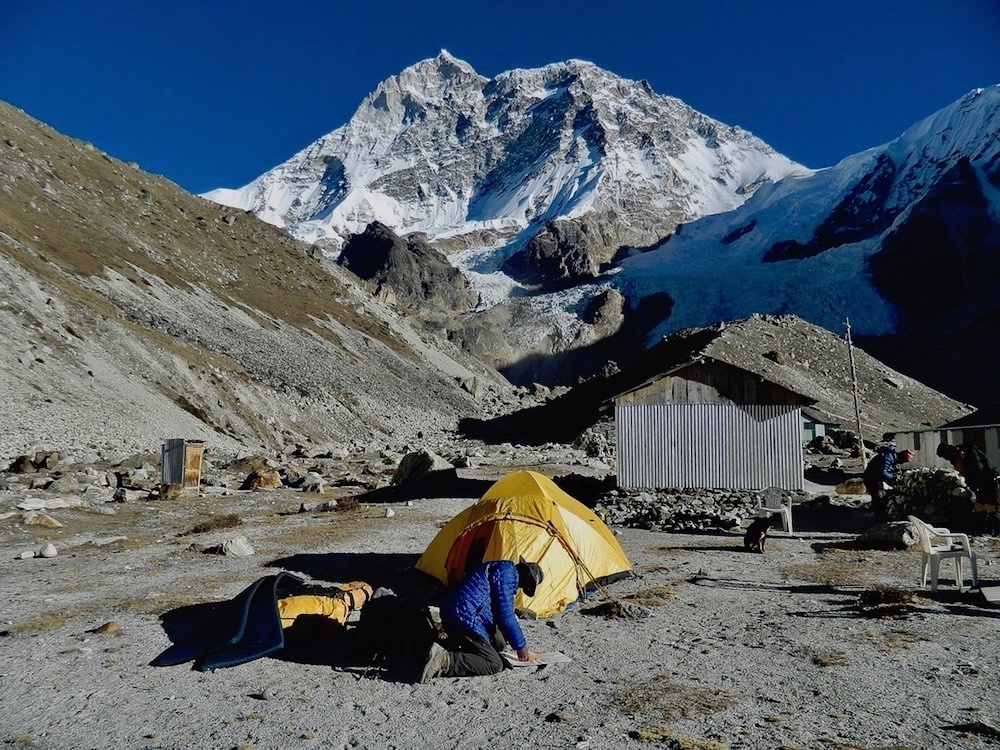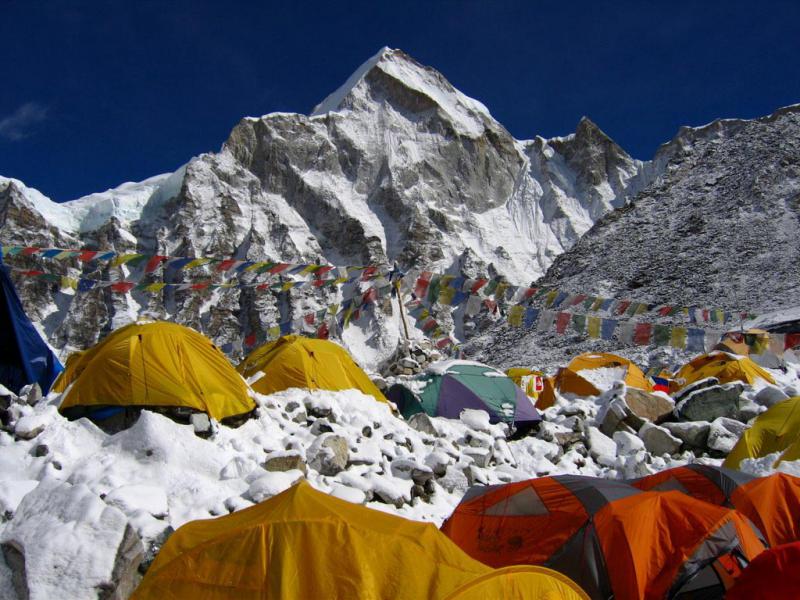Makalu Barun National Park, situated in Nepal’s remote Solukhumbu and Sankhuwasabha Districts, stands as one of the country’s most remote and diverse natural wonders. Spanning 1,500 square kilometers, it offers a breathtaking combination of snow-capped peaks and lush tropical forests, with elevations exceeding 8,000 meters above sea level. Moreover, Makalu Barun National Park lies along the trekking route to Mt. Makalu Base Camp.
Established in 1992, authorities designated Makalu Barun as an eastern extension of Sagarmatha National Park, showcasing outstanding conservation innovation. Under the oversight of the Department of National Parks and Wildlife Conservation, the park introduces a novel approach that combines protected area management and community development
This unique approach enables local communities to become managers of their valuable cultural heritage and natural resources. Forest guardianship and community-controlled grazing are two initiatives that encourage residents to actively participate in the park’s preservation, ensuring a sustainable future for both wildlife and people.
Visitors who trek to Mt. Makalu Base Camp see not only breathtaking landscapes but also the harmony between nature and humanity in this extraordinary sanctuary. Makalu Barun National Park demonstrates Nepal’s commitment to conservation and community collaboration, providing a model for the long-term preservation of our planet’s valuable ecosystems.
Highlights of Makalu Barun National Park:
- Rare Wildlife and Vegetation: This captures the interest of nature enthusiasts and highlights the park’s biodiversity.
- Deepest Valley—Arun Valley: It evokes a sense of adventure and exploration while highlighting the park’s unique geographical features.
- Experience Sherpa Culture and Monasteries: People interested in cultural immersion and historical significance find this appealing.
- Explore Makalu National Park: This gives a general overview and encourages further exploration of the park’s diverse offerings.
Immerse Yourself: Top Things to Do in Makalu Barun National Park
Makalu Barun National Park, situated in Nepal’s Himalayas, encompasses the surrounding Buffer Zone and Makalu Barun Valley. Expeditions from Makalu Base Camp within the park reach Mount Makalu, the world’s fifth-highest mountain.
Hiking, camping, wildlife viewing, and bird watching are just a few of the activities that Makalu Barun National Park has to offer its visitors.
Trekking
Starting in Kathmandu, the Makalu Barun National Park trekking route concludes in Yangle Kharka. The Makalu walking track winds through thick forests of pine, oak, and rhododendron.

For the best conditions, plan your hike between March and May or October and November.
Bird Watching
Makalu Barun National Park harbors many species of birds, including the Himalayan Bulbul, the Red-vented Bulbul, and the Hill Partridge. March through May is the ideal period to go bird-watching.
Explore the Sherpa culture
An ethnic group from the Himalayas noted for their mountaineering prowess and Buddhist faith, the Sherpa people live in Makalu Barun National Park.
Also Read: Things you don’t know about Khaptad National Park
Visitors can get an overview of Sherpa culture by touring monasteries and villages.
Explore Flora and Fauna
Flora
Makalu Barun National Park harbors a wide variety of forest types typical of the Eastern Himalayas. These range from subalpine conifer stands at 4,000 meters (13,000 ft) to near-tropical dipterocarp monsoon forests at 400 meters (1,300 ft). Moreover, seasonal variations in moisture, temperature, and snow cover at different elevations and slopes shape the specific characteristics of the forests. Additionally, subsistence farming has a major impact on forests below 2,000 meters (6,600 feet), leaving only a few ecologically significant trees standing. However, above 2,000 meters, the chilly, humid atmosphere discourages agricultural development, resulting in dominant or extensive forests.

Aromatic herbs and delicate wildflowers thrive on alpine pastures over 4,000 m (13,000 ft), home to the religiously significant dwarf rhododendron and juniper. There is minimal flora and mostly rock and ice in the area above 5,000 meters (16,000 feet).
Fauna
Numerous different types of fauna can be found in the protected region. Furthermore, there are sixteen species of amphibians, forty-three species of reptiles, and 315 species of butterflies. Additionally, many ponds, lakes, and rivers are home to 78 different species of fish. Moreover, a total of 440 bird species have been identified by ornithologists; these include white-necked storks, vividly colorful sunbirds, eagles, and other raptors. Lastly, the 16 uncommon or protected bird species include the blue-naped pitta, pale blue flycatcher, rose-ringed parakeet, Blyth’s kingfisher, blue-naped pitta, silver-eared mesia, spiny babbler, and white-naped yuhina.
You may also like: Langtang National Park: Things to Know
The region boasts 88 species of mammals. Among them are snow leopards, Indian leopards, clouded leopards, and many more. In May 2009, zoologists captured the first camera trap image of an Asian golden cat at 2,517 m (8,258 ft).
Unlock Makalu Barun’s Secrets: Choosing the Perfect Time to Visit
The best months to visit Makalu Barun National Park are March through May and October through November, though it is open year-round. The best months to visit for beautiful weather are those with temperatures ranging from 20 to 25 degrees Celsius. If visitors visit during the park’s wettest months, June through September, they should prepare for wet conditions.
Climate
Due to its location in the eastern Himalayan climate regime, the Makalu-Barun region experiences monsoons. Furthermore, it starts earlier in June and lasts longer than in west Nepal, extending until late September. Moreover, most people describe the climate as monsoonal, with more than 70% of precipitation falling between June and September.

Premonsoon rains are frequent in April and May and have a significant role in the formation of biomes. Extreme differences in altitude, slope, and aspect within the area can be predicted to cause great fluctuations in temperature and precipitation. However, no good records of climatic data represent the entire area.
Getting There
Daily flights operate from Kathmandu to Tumlingtar, and Biratnagar or Dharan is another route that leads to Tumlingtar. Tumlingtar is a three-day trek from Hile, which is reached after a six- to seven-hour drive. Lukia and Phalpu are other routes to the Inkhu Valley of Makalu Barun. Flights are a popular choice for getting from Kathmandu to Tumlingtar.
Makalu Barun National Park: Entry Fees
There is no admission fee for nationals of Nepal. There is an entry fee of NPR 100 for citizens of the SAARC countries (Bangladesh, Bhutan, India, Bangladesh, Pakistan, Nepal, the Maldives, and Sri Lanka). For foreign visitors, the entrance fee is NPR 1,000 per person.
Read More: Sagarmatha National Park
Accommodation
While there aren’t many lodging alternatives in Makalu Barun National Park, guests can stay in lodges and guesthouses in the neighboring communities. Additionally, nearby towns offer a range of accommodation options for visitors. The park’s lodges and guesthouses range in price from $10 to $50 per night, offering budget- to mid-range options.







